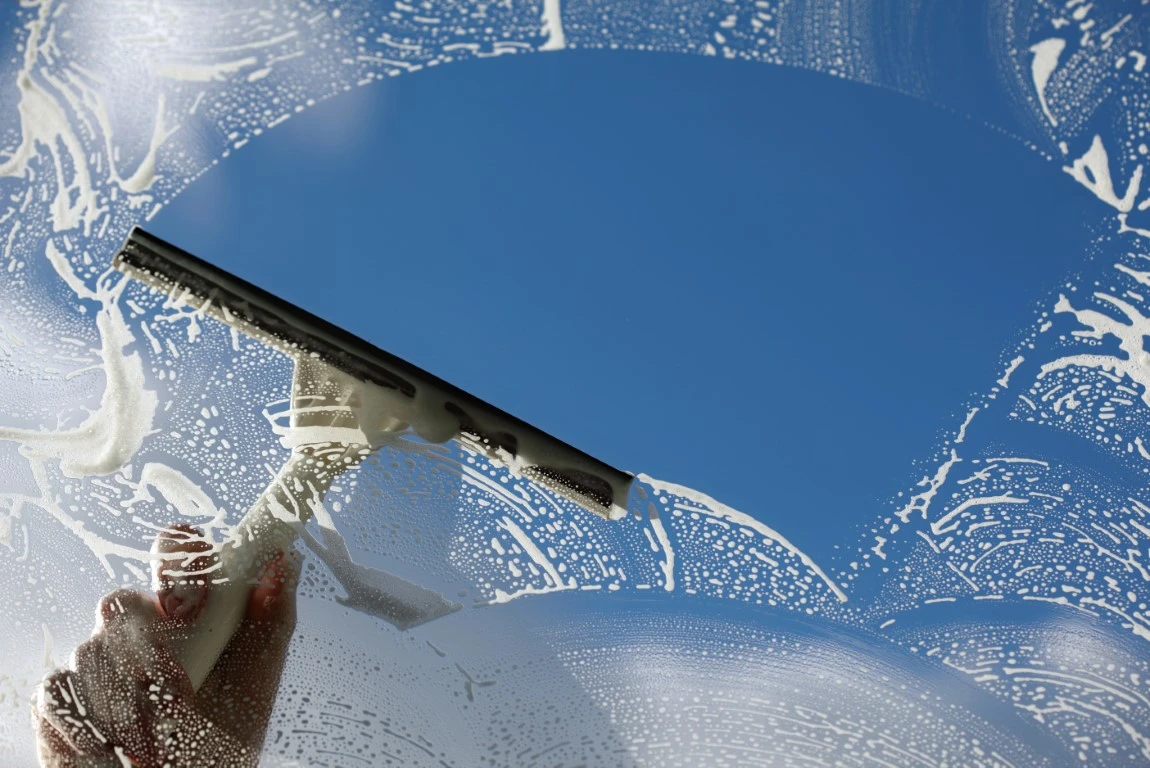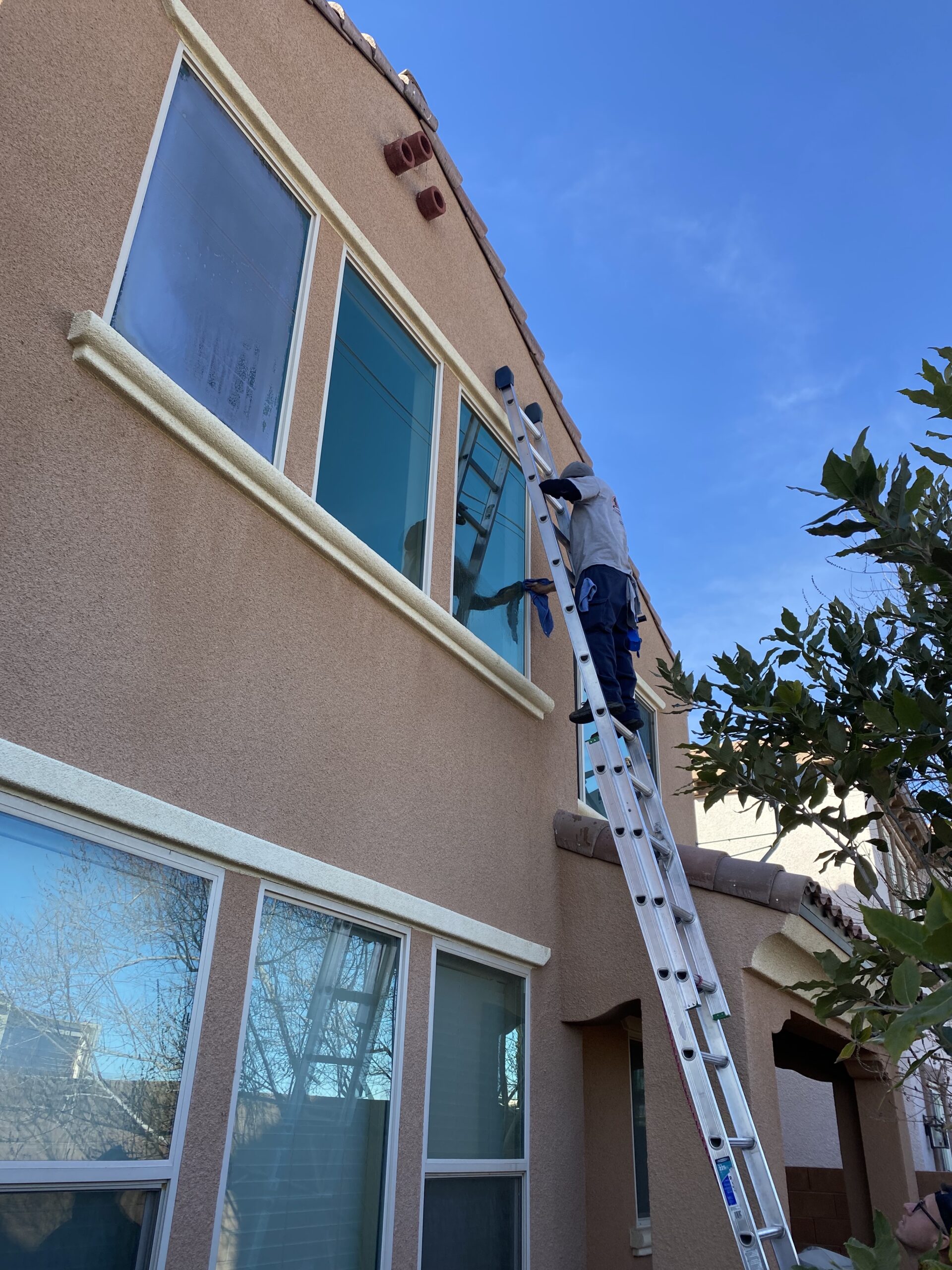The Best Tools and Techniques for Streak-Free Windows
February 10, 2025

September 5, 2024
As the crisp air of fall settles in and the leaves begin to change, it’s easy to get caught up in the beauty of the season. But as autumn hints at the colder months ahead, now is the perfect time to start to prepare your property for winter. A little effort in the fall can save you from dealing with costly repairs and chilly drafts when winter arrives. Whether you’re a seasoned homeowner or new to the responsibilities of property upkeep, taking a few proactive steps now will ensure your home is ready to face whatever winter throws its way. In this guide, we’ll walk you through essential tasks to protect your property and keep it cozy all season long.

Inspecting and cleaning your gutters is a crucial step to prepare your property for winter. As leaves and debris accumulate during the fall, they can clog your gutters, leading to water overflow and the formation of ice dams when temperatures drop. Ice dams not only prevent proper drainage but can also cause water to back up under your roof, leading to leaks and significant damage.
To avoid these issues, regularly clear your gutters of leaves, twigs, and other debris. While cleaning, inspect your gutters for any signs of damage, such as cracks, rust, or loose connections, and ensure that gutters are securely attached to your home to handle the weight of snow and ice. Proper gutter maintenance protects your home from water damage to your roof, walls, and foundation. Taking these proactive measures during the fall will help keep your home safe and dry throughout the winter.
Sealing gaps and cracks around your home is another essential step to prepare your property for winter. Cold air often seeps in through common areas like windows, doors, and the foundation, leading to drafts that make your home less comfortable and increase heating costs. By identifying and sealing these gaps, you can significantly improve your home’s energy efficiency and ensure that warm air stays in and cold air stays out.
You can use caulk to seal cracks around window frames, door jams, and baseboards. For larger gaps around doors and windows, apply weather stripping to create a tight seal. Don’t forget to check areas like attic hatches, around pipes, and in your basement, as these can also be sources of air leakage. By taking time to seal gaps and cracks, you’ll not only keep your home warmer but also lower your energy bills, making this a cost-effective and straightforward way to prepare for winter.
Checking and servicing your heating system before winter is crucial for maintaining a warm and efficient home. Scheduling a professional HVAC inspection ensures that your system is operating safely and at peak performance. A technician can identify and address potential issues before they turn into costly breakdowns during the coldest months.
In addition to professional servicing, change your air filters regularly to improve airflow and indoor air quality. Also be sure to test your thermostat to make sure it is functioning correctly. Regular maintenance not only extends the life of your heating system but also ensures it runs efficiently, keeping your home comfortable while reducing energy costs.
Preparing your outdoor plumbing for winter is essential to prevent freezing and burst pipes. Start by draining and disconnecting hoses, and then shut off the water supply to outdoor faucets. Open the faucets to drain any remaining water, ensuring they’re completely dry. Winterize your irrigation system by draining it or blowing out the lines with compressed air.
To further protect your plumbing, insulate exposed pipes with foam covers or heat tape, especially in unheated areas like garages and crawl spaces. These measures prevent water from freezing inside the pipes, which can cause them to crack or burst, leading to costly repairs. Properly winterizing your outdoor plumbing safeguards your home against winter damage and ensures a hassle-free spring.

Pruning trees and shrubs in the fall is a key step in protecting your property from winter damage. Heavy snow and ice can weigh down branches, causing them to break and potentially damage your home or power lines. Start by identifying and removing dead or overhanging branches that are at risk of breaking.
Pruning also helps shape your plants, encouraging healthy growth in the spring. By removing weak or excess branches, you allow more sunlight and air to reach the remaining parts of the plant, promoting stronger, more resilient growth. Proper fall pruning not only protects your property but also sets the stage for a vibrant and healthy landscape in the coming year.
The last tip we’ll give to prepare your property for winter is to inspect and prepare your roof to protect your home from leaks and ice dams. Start by checking for loose or damaged shingles, which can allow water to seep in and cause significant damage. Repair any issues promptly to ensure your roof is watertight.
Clear debris like leaves and branches from the roof, as this can trap moisture and lead to rot. Pay special attention to the flashing around chimneys and vents, ensuring it’s securely in place to prevent leaks. A well-maintained roof not only protects your home from water damage but also helps prevent ice dams, which can form when heat escapes through the roof, causing snow to melt and refreeze at the eaves.
For professional roof washing services, choose G&S Window Cleaning! We specialize in cleaning every type of exterior surface, including roofs. We can transform your roof instantly to get it ready for the winter and protect it against the elements. Contact us today to learn more about our services and get an instant quote.

February 10, 2025

January 3, 2025

December 4, 2024

November 5, 2024
9706 Summer Bliss AVe.
Las Vegas, NV 89149
| MONDAY | 8:00 AM - 5:00 PM |
|---|---|
| TUESDAY | 8:00 AM - 5:00 PM |
| WEDNESDAY | 8:00 AM - 5:00 PM |
| THURSDAY | 8:00 AM - 5:00 PM |
| FRIDAY | 8:00 AM - 5:00 PM |
| SATURDAY | 9:00 AM - 12:00 PM |
| SUNDAY | CLOSED |
© 2025 G & S Window Cleaning, LLC. | All Rights Reserved | Privacy Policy | Terms | XML Sitemap | Sitemap | Site by PDM
